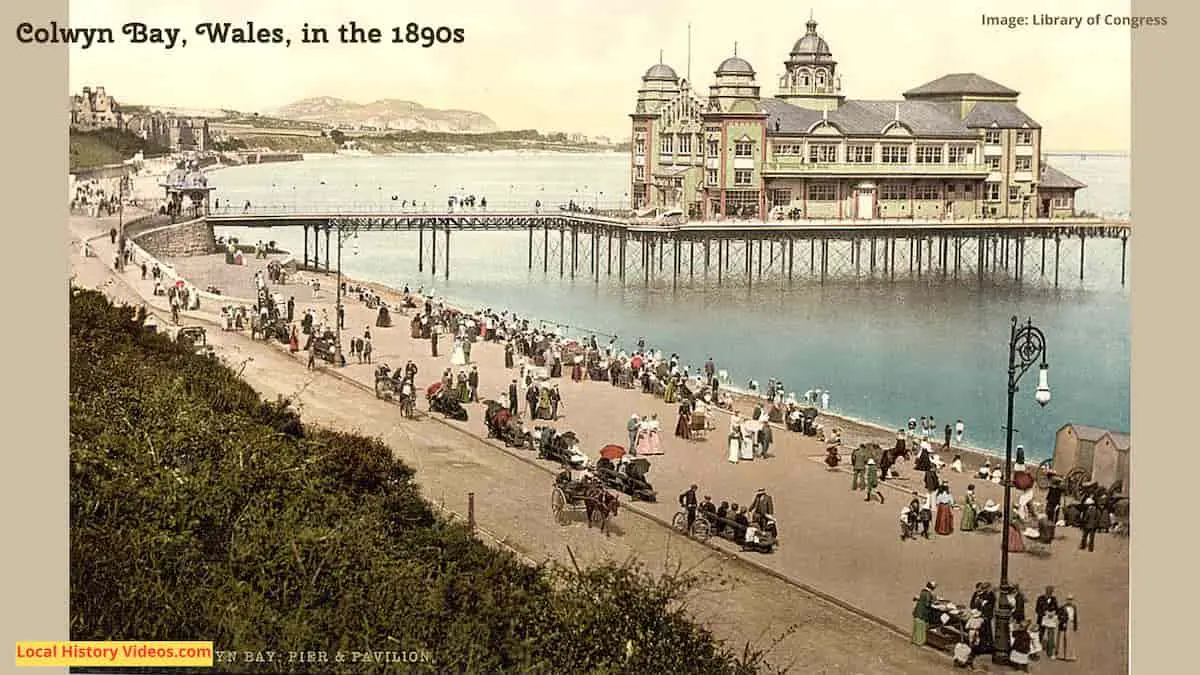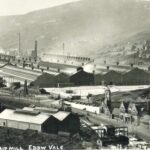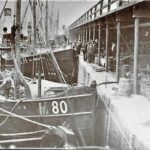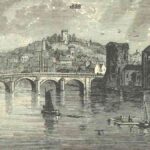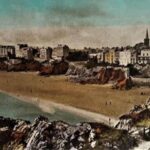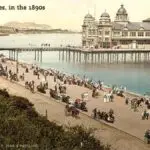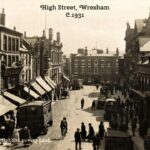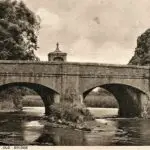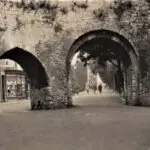Enjoy a glimpse of history through old images of Colwyn Bay in Conwy, Wales.
Old Photos of Colwyn Bay
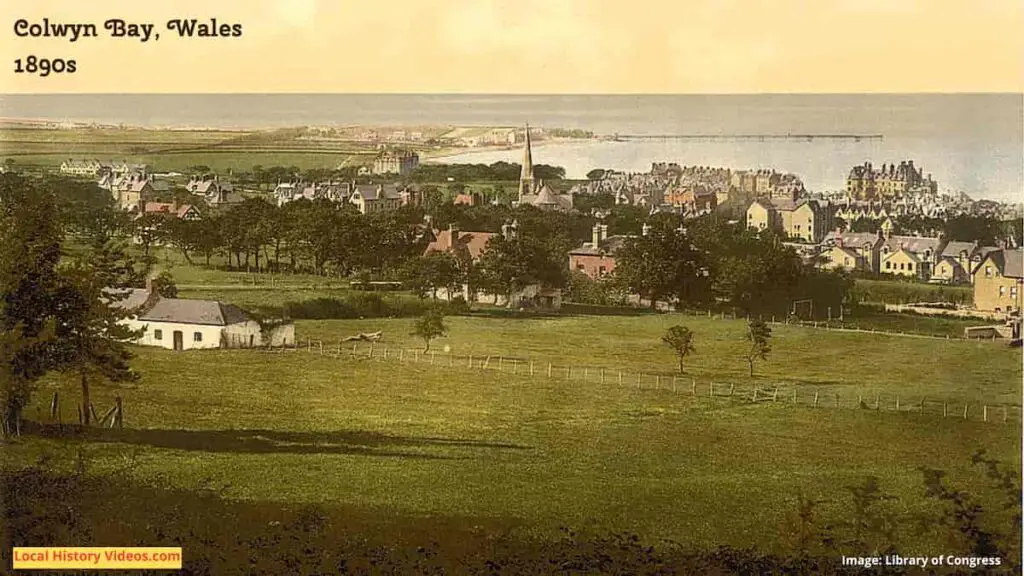
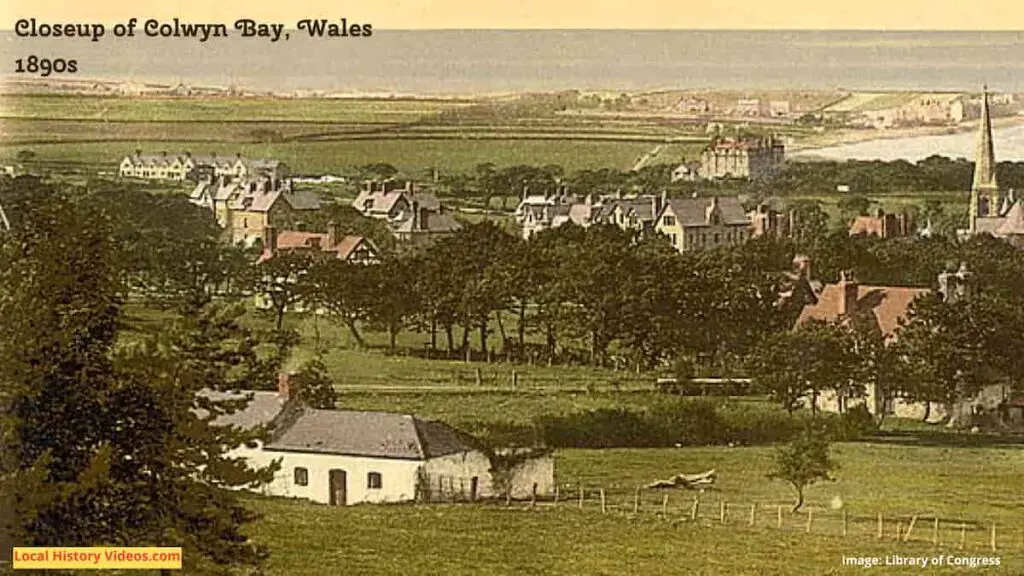
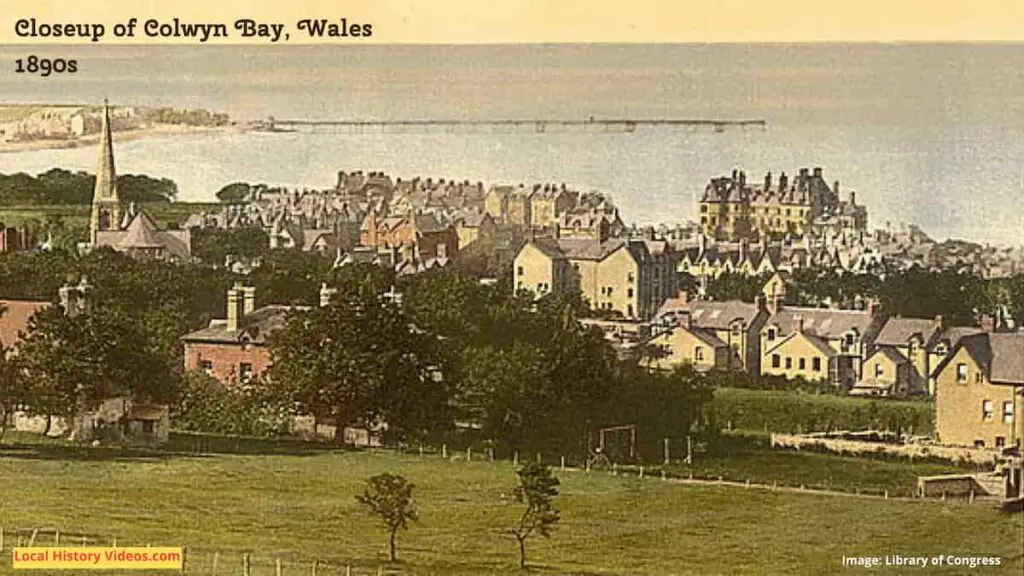
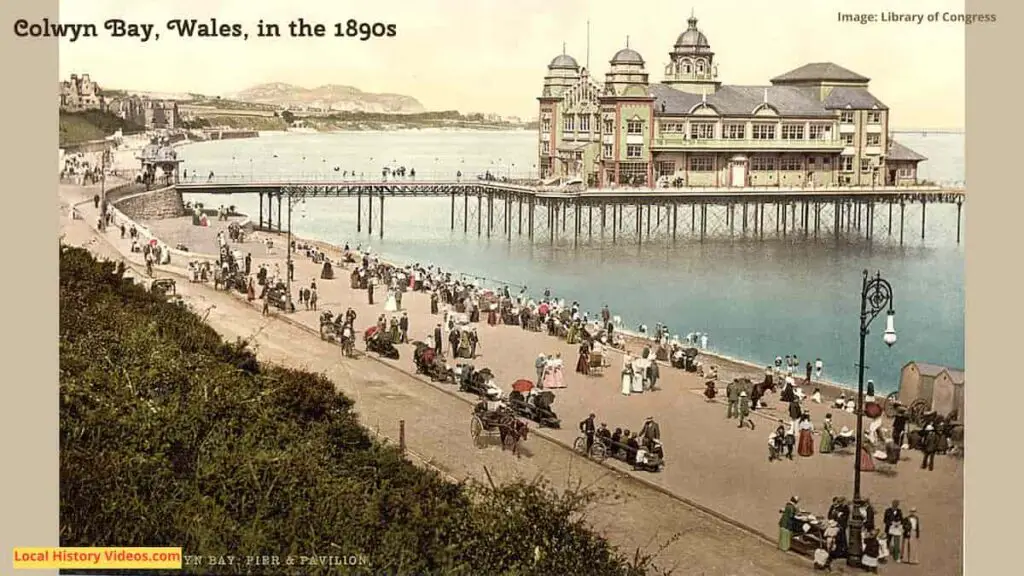
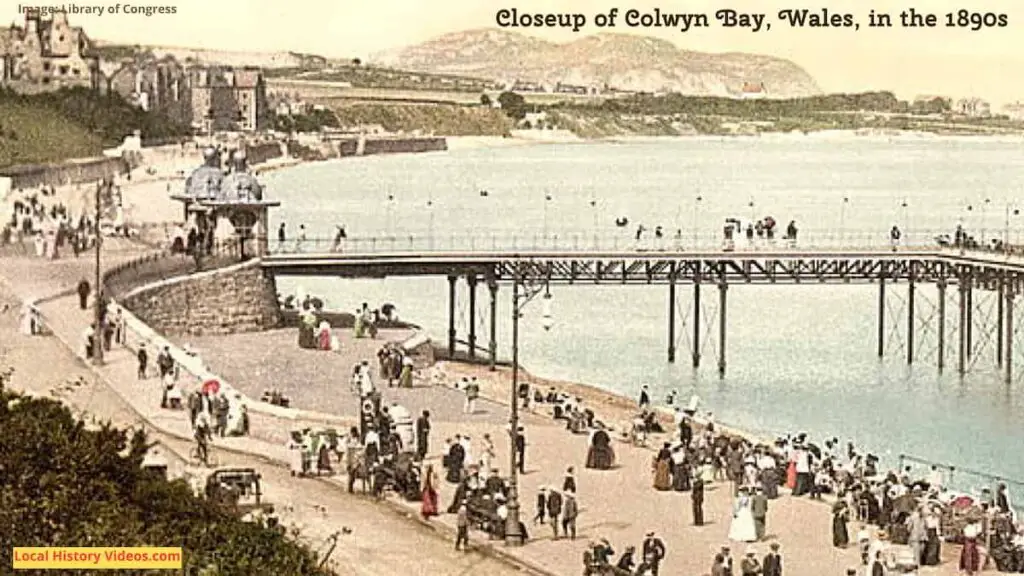
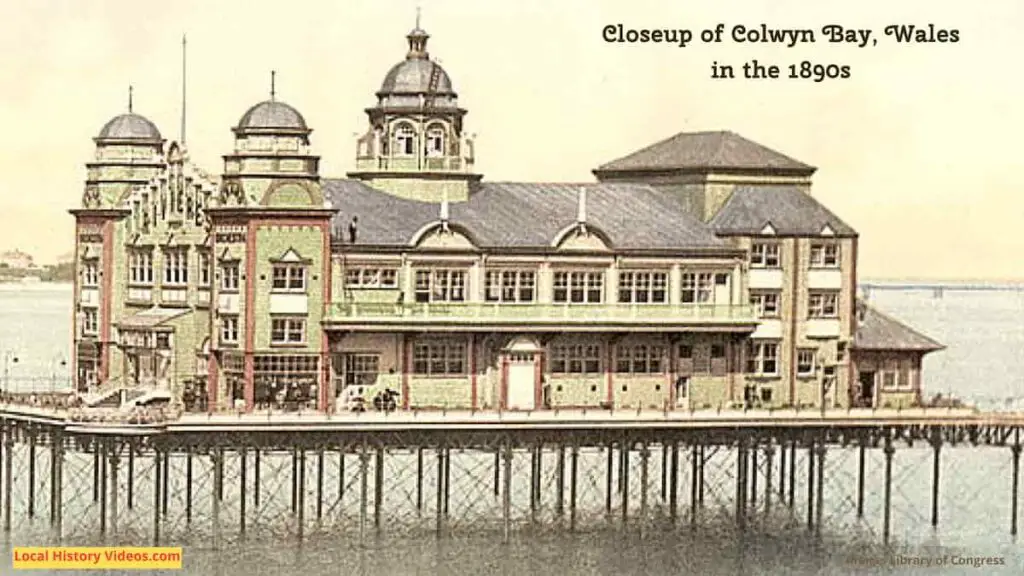
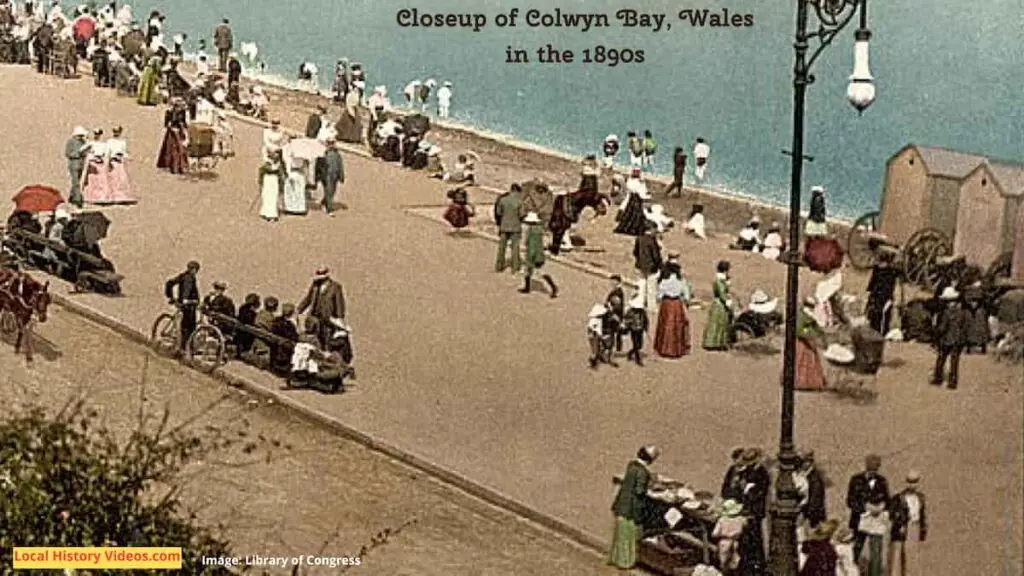
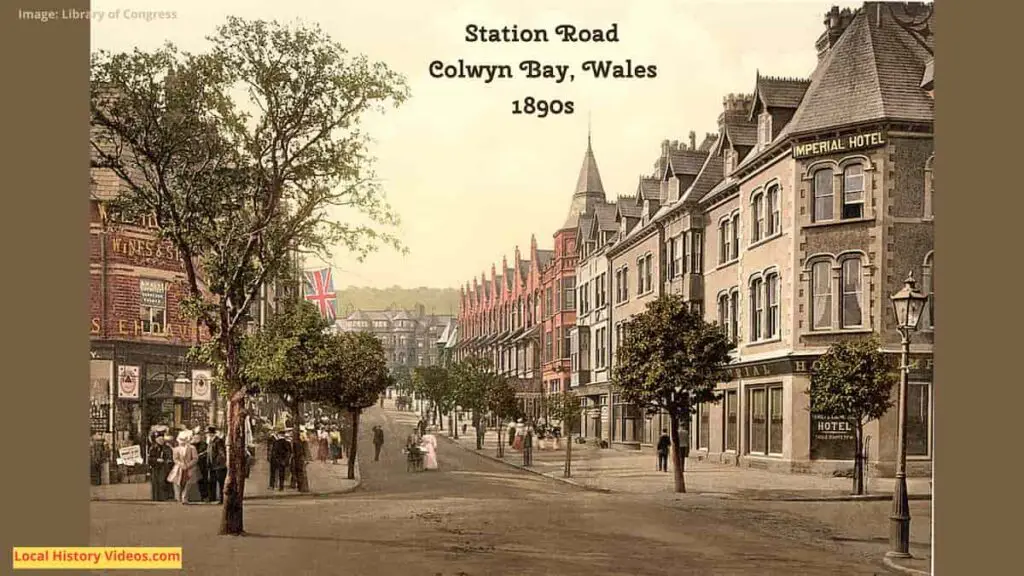
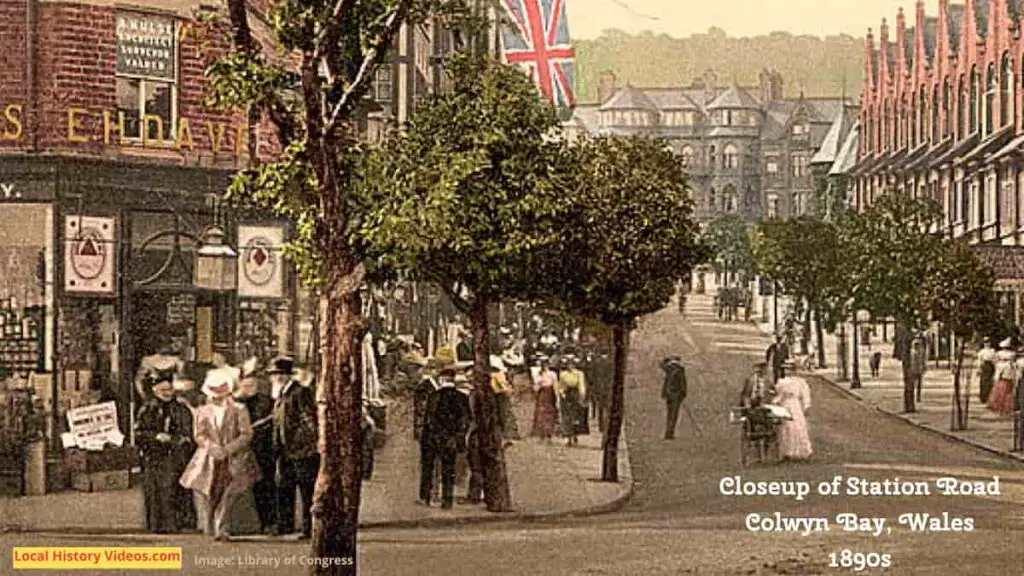
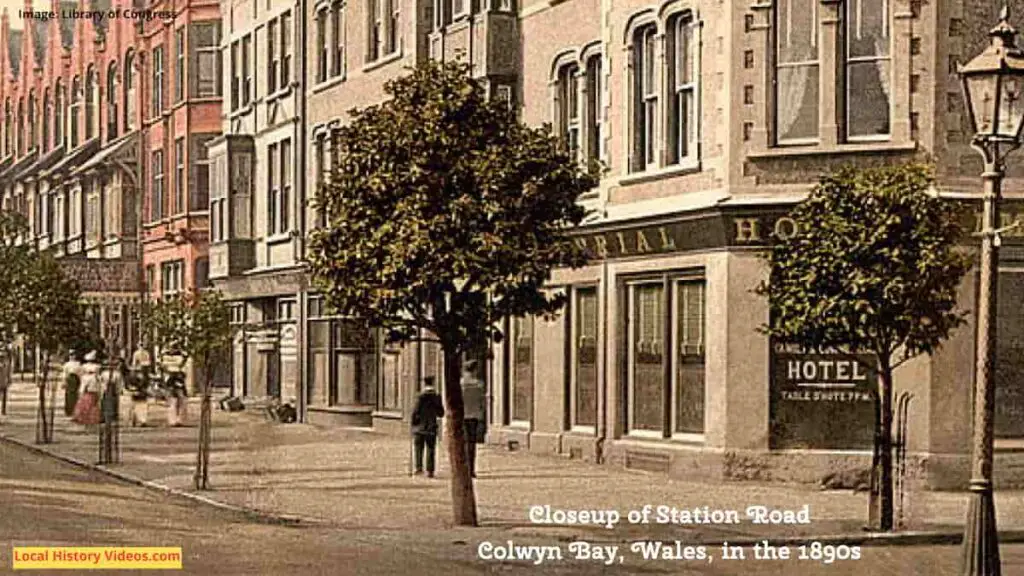
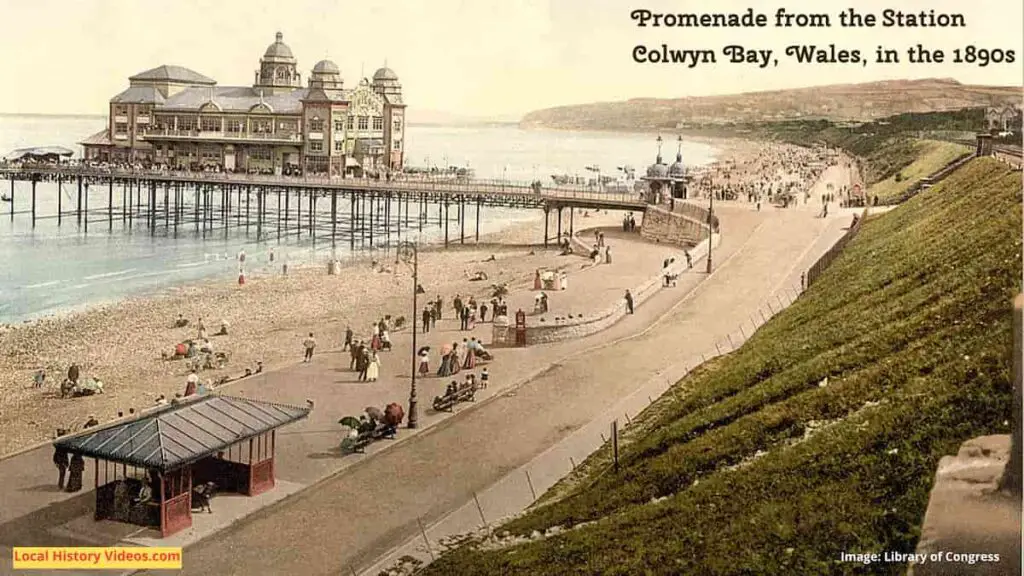

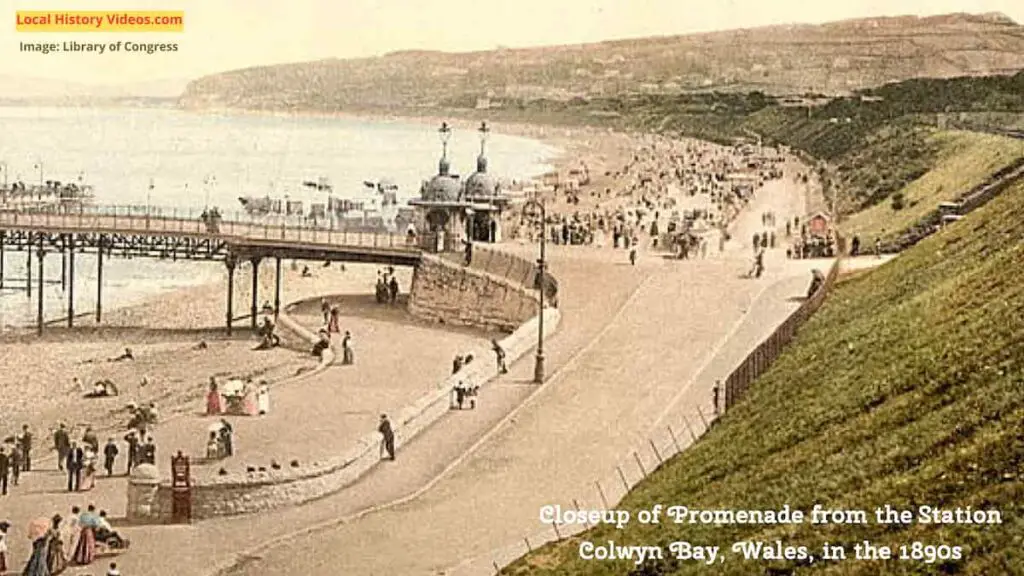
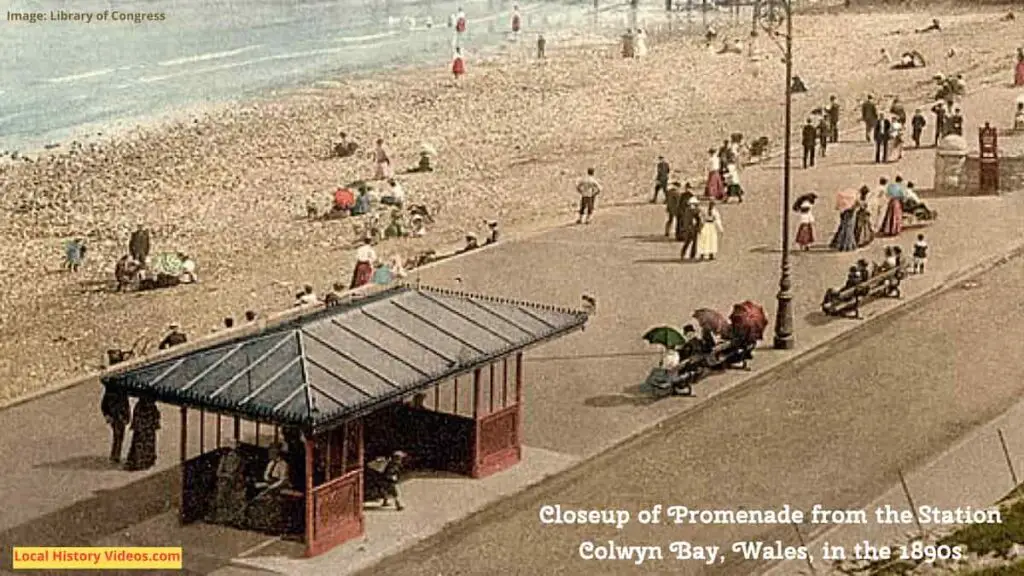
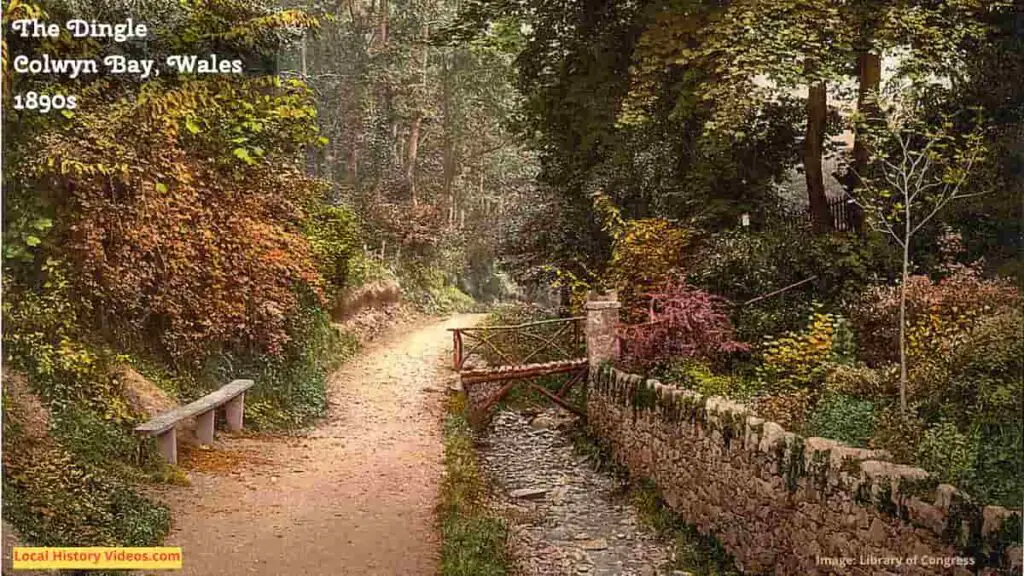
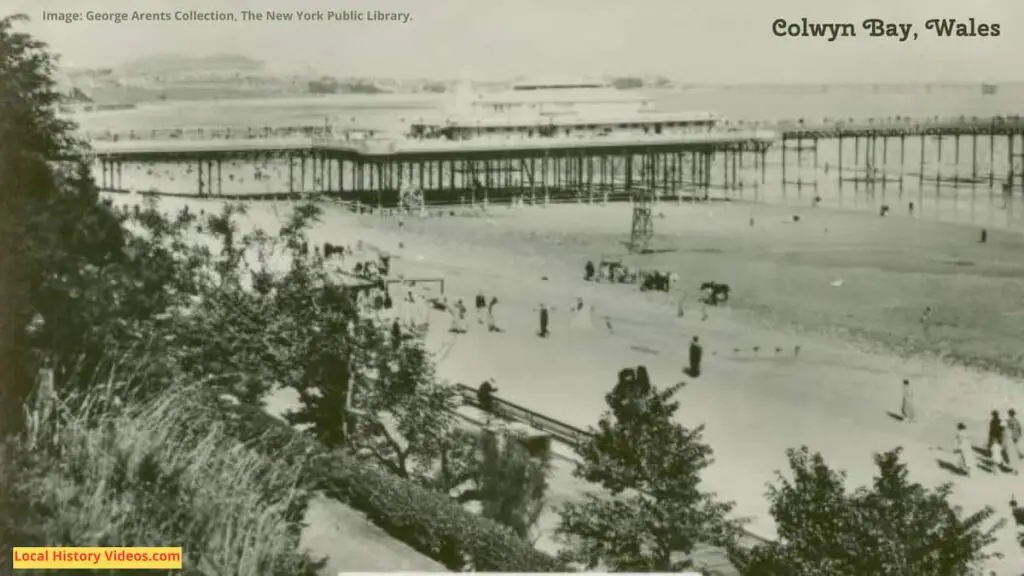
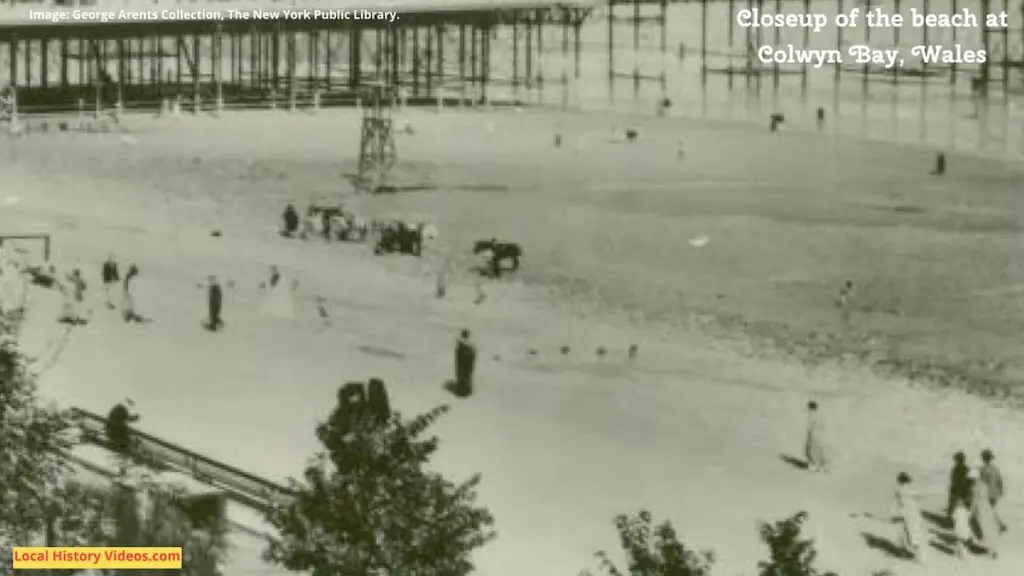
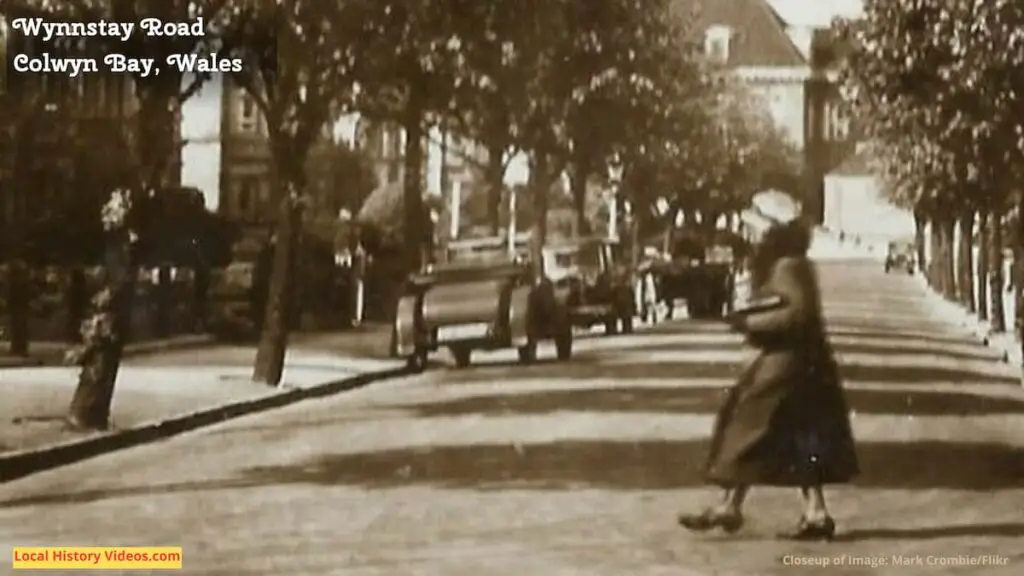

Victoria Pier
Colwyn Bay: Victoria Pier Through Time (2021-1900): The Time Travel Artist (YouTube)
A Bit of Colwyn Bay History
Extract from:
Black’s Guide to North Wales
by Adam and Charles Black (Firm)
Published in 1897
Pages 28 & 29
This name is given to the central station of a bay about 3 miles wide, backed by woody heights.
To the east, on the quarried hill ending as Llysfaen Point, stands Old Colwyn with a station of its own, not so much favored by quick trains.
To the west, the new colony of Llandrillo yn Rhos has thrown out a long pier as a sign of how it means to grow.
About a mile of more or less open ground as yet separates these three; but there is little doubt of their soon being united.
Besides its popularity as a beautiful summer resort, Colwyn Bay has been found out as enjoying a remarkably favored winter climate, attested not only by statistics but by the surer proof of the vegetation that flourishes here.
A consumptive patient who had been in the habit of wintering abroad informs us that after spending three successive winters at Colwyn Bay, he found them more genial than had been his experience at Pozzuoli, near Naples. As yet this is not widely enough known, but the number of winter guests and residents goes on increasing, and some day the whole shore from Rhyl to Llandudno, if not to Penmaenmawr, may be found grown into a northern Bournemouth, airier and drier in climate.
The population of the urban district is now close to 5000.
The worst thing to be said against Colwyn Bay is that the L. & N.-W. R., constructed before any watering-place amenities were thought of, has too much monopolized the shore by its embankment; and the usual prominent features of pier, pavilion, and such like, are here replaced by the brick station as a central point, admirable only as hiding the huge scarred hollow behind, which before long, we are glad to hear, may be glorified into a public garden.
Access to the shore is provided at more than one point, at the station itself, by the Colwyn Bay Hotel, and by the pretty Eirias Dingle, for which one turns down by the Abergele Road Post Office.
There has been hitherto only one little bit of sea-side promenade at the hotel, but this is now continued around the bay, a subway opening onto it under the railway.
The upper part of the shore is rather rough; but below are good sands for safe bathing, and boats can be taken with equal safety once they get launched.
The short Station Road leads up by the Post Office into the nucleus of this smart new town, spreading for the most part along the high road to Conway; but many of the best houses rise on the hill above to the west.
The handsome new church stands a little way eastward towards Abergele; in the other direction is a not less handsome Wesleyan one.
Besides a Public Hall for lectures and entertainments, there are several other chapels, the Roman Catholics appearing to be the only influential body not thus represented as yet.
From an inland lake, the town has an excellent supply of water, shared with Conway.
The various advantages of Colwyn Bay have brought about the establishment of several good boarding-schools for boys and girls, and one known as the Congo Institute for the training of African youths, who give another testimonial to the climate.
Old Colwyn, about a mile to the east, is as yet more of a country village than its smart neighbor, and has not such a picturesque background; but the number of villas and bungalows in the newest styles that go on growing about its slopes shows that any idea of disparagement is by no means general.
It has, as lions, a good Church and an old stone bridge in the dingle running down to the sea, which seems a little too far off for such a resort, of which the mild climate, more airy than below, makes the strong point.
Old Colwyn is in an outlying strip of Carnarvonshire, beyond which we get back into Denbighshire.
More about Wales
- Old Images of Monmouth, WalesGlimpse history through old images of Monmouth, in Monmouthshire, Wales.
- Old Images of Blaenau Gwent, WalesEnjoy a glimpse history through old images of Blaenau Gwent, Wales.
- Old Images of Monmouthshire, WalesEnjoy a glimpse of history through old images of Monmouthshire, Wales.
- Old Images of Pembrokeshire, WalesEnjoy a glimpse of history through old images of Pembrokeshire, in Wales.
- Old Images of Llanybydder, WalesGlimpse the past through old images of Llanybydder in Carmarthenshire, Wales.
- Old Images of Newport Castle, WalesEnjoy a glimpse o history through old images of Newport Castle, in Pembrokeshire, Wales.
- Old Images of Tenby, WalesEnjoy a glimpse of history through old images of Tenby, in Pembrokeshire, Wales.
- Old Images of Colwyn Bay, WalesEnjoy a glimpse of history through old images of Colwyn Bay in Conwy, Wales. Old Photos of Colwyn Bay Victoria Pier Colwyn Bay: Victoria Pier Through Time (2021-1900): The Time Travel Artist (YouTube) A Bit of Colwyn Bay History Extract from: Black’s Guide to North Wales by Adam and Charles Black (Firm) Published in 1897… Read more: Old Images of Colwyn Bay, Wales
- Dr Thomas Macnamara, Minister of LabourFind out more about the Canadian born British politician who became Minister of Labour to Lloyd George, Dr Thomas James MacNamara.
- The Myth Of The Llangernyw Yew, ConwyThe Llangernyw Yew is more than 4,000 years old and is the oldest tree in Wales.
- Wrexham, Wales: Old Photos & FilmsEnjoy a glimpse of history through old images of Wrexham, Wales.
- Barry, Wales: Old Photos & FilmsStep back in time with fascinating old images of the seaside town of Barry, in Wales.
- Cwmbran, Torfaen, Wales: Old Photos & FilmsStep back in time with fascinating old images of Cwmbran, Wales.
- Swansea, Wales: Old Photos & FilmsStep back in time with fascinating old images of Swansea in Wales.
- Pontypridd, Rhondda Cynon Taf: Old Photos & FilmEnjoy a glimpse of history through old images of Pontypridd, in Rhondda Cynon Taf, Wales.
- Newtown, Powys: Old Photos & FilmsStep back in time with fascinating images of Newtown in Powys, Wales.
- Old Images of Haverfordwest, PembrokeshireGlimpse history through old images of Haverfordwest, Wales.
- Local History Resources for Pembrokeshire, WalesDiscover some of the many local history resources for Pembrokeshire, Wales, helping you uncover the people and places of the past.
- Newport, Wales: Old Photos & FilmsGlimpse history through old images of Newport, Wales.
- Newport, Wales: Local History ResourcesThe city and unitary authority area of Newport is found in the Southeastern corner of Wales. Once famous for its docks which transported huge quantities of coal throughout much of the industrial revolution, today the third largest city in Wales offers history enthusiasts a wide array of resources and attractions.

